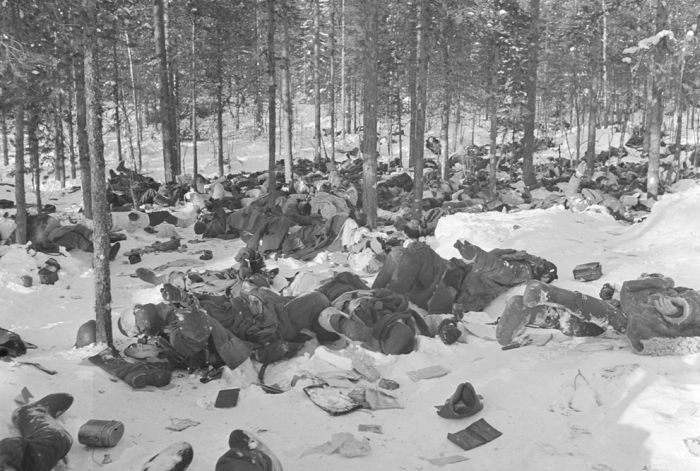|
|
History: World War II Photography, Finnish Defense Forces, Finland
|
The new government reinstituted conscription after the Civil War and established a small national army. It also introduced a mobilization system and compulsory refresher courses for reservists. The Finnish Military Academy was reactivated in 1919, and during the 1920s a reserve officers' school was formed, together with NCO schools for various branches and arms of the service. The Civil Guard, a voluntary rightist formation of 100,000 personnel derived from the White Guards, constituted a local auxiliary. Nevertheless, Finland did not succeed in building a strong national army. The requirement of one year of compulsory service was greater than that imposed by any other Scandinavian country in the 1920s and the 1930s, but political opposition to defense spending left the military badly equipped to resist attack by the Soviet Union, the only security threat in Finnish eyes.
When the Soviets invaded in November 1939, they were met by a force of 135,000 Finnish troops organized into 9 divisions. In what became known as the Winter War, the Finnish army defeated numerically superior invading Soviet formations within a relatively short period of time. The initial Red Army contingents were poorly trained, and they were ill prepared for combat under severe inclement winter conditions. The Finnish army was able to inflict sharp reversals in battles on the Karelian Isthmus and in northeastern Finland, killing between 200,000 and 250,000 Soviet soldiers. Momentarily, it looked as if Finland would turn back the aggressor and would inflict an astonishing military defeat on its great and powerful neighbor. When the Soviet commanders reverted to a strategy of wearing down the greatly outnumbered Finns in Karelia by their overwhelming firepower, however, Finland's defeat was inevitable. On March 12, 1940, an armistice yielded slightly more territory to the Soviets than they had initially demanded in 1939. The Soviets regarded this territory as being vital to their preparations for a future showdown with Nazi Germany.
In the Continuation War, fought by Finland as a cobelligerent with Germany from 1941 to 1944, Finnish forces again demonstrated their superior qualities. Thanks to the Germans, the army was now much better equipped, and the period of conscription had been increased to two years, making possible the formation of sixteen infantry divisions. The fully mobilized Finnish army of 400,000 was numerically superior to the opposing Soviet forces, which had been thinned to meet the need for troops to resist the German onslaught on the central front. The Finnish goal was not conquest but regaining territories traditionally Finnish. The Finns refused German pressure to direct the main push of its troops to breaking the siege of Leningrad instead pushing 80 to 160 kilometers into Soviet territory farther north above Lake Ladoga before settling for static defensive operations. The Finnish army continued to occupy this former Finnish area until the major Soviet offensive of June 1944. Confined in the losing Axis coalition, the Finns had to retreat for a second time, and they escaped total Soviet invasion and occupation only by entering into a separate agreement that obligated them to military action against the retreating German armies.
The demobilization and regrouping of the Finnish Defense Forces were carried out in late 1944 under the supervision of the Allied Control Commission. Following the Treaty of Paris in 1947, which imposed restrictions on the size and equipment of the armed forces and required disbandment of the Civil Guard, Finland reorganized its defense forces. The fact that the conditions of the peace treaty did not include prohibitions on reserves or mobilization made it possible to contemplate an adequate defense establishment within the prescribed limits. The reorganization resulted in the abolition of about 15 percent of officer and NCO positions, the adoption of the brigade—in place of the division- -as the basic formation, and the reduction of the term of service for conscripts to 240 days (330 days for NCO and for reserve officer candidates). The organization of the high command was unchanged, but the minister of defense was given slightly more authority in decision making. The completion of this reorganization in 1952 established the structure within which the modern Defense Forces were to evolve.
|
|









